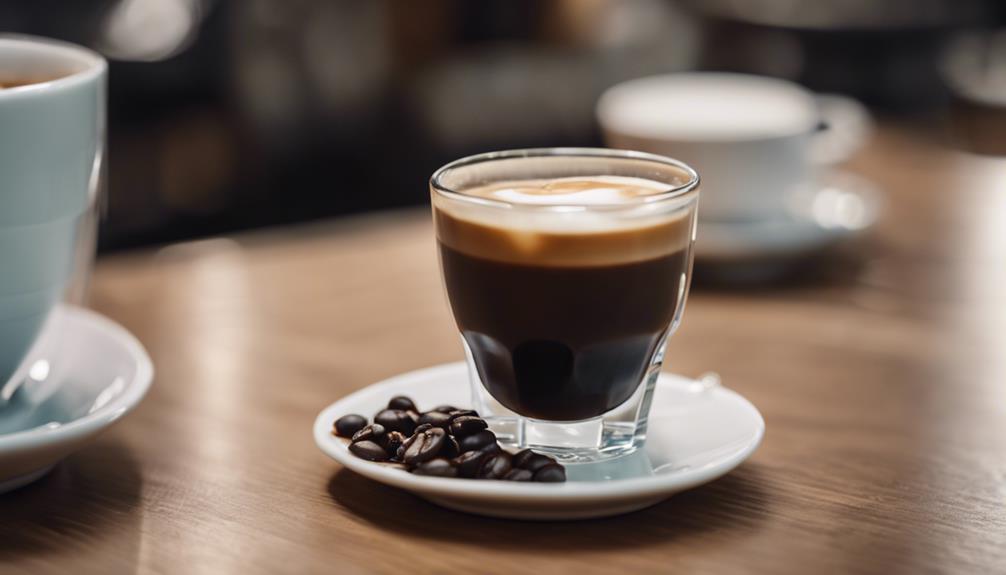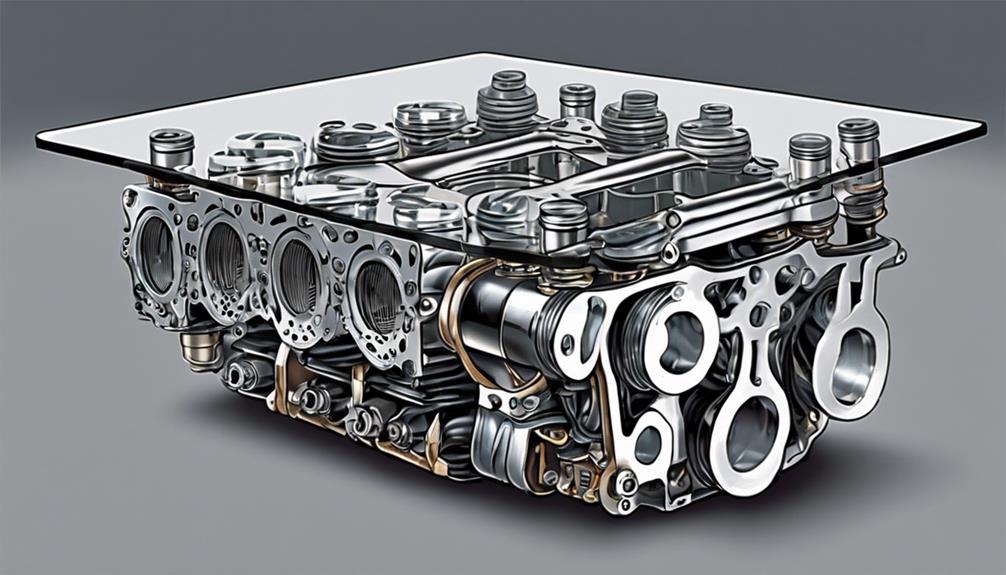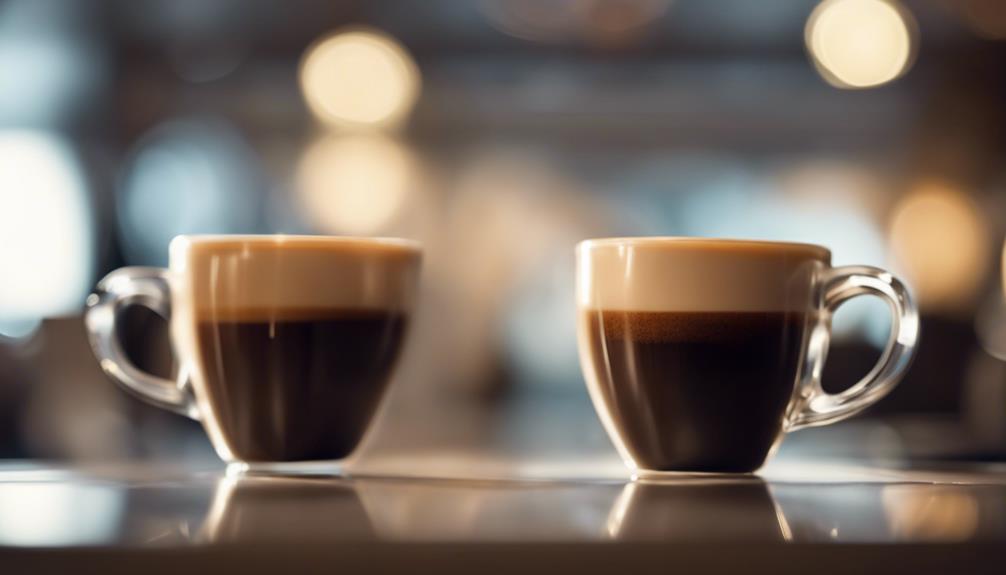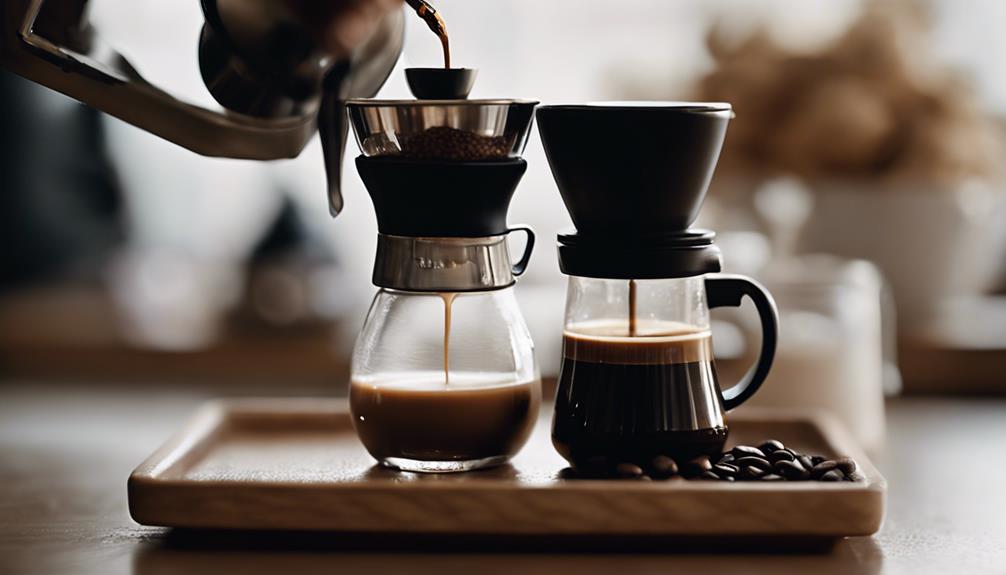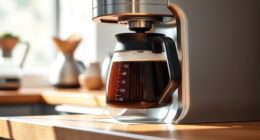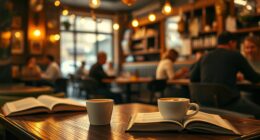You are deciding between cold brew and espresso, but which one is best for you? It depends on your taste preferences, caffeine needs, and brewing time. If you enjoy a smoother, less acidic coffee with a bold flavor, cold brew may be your choice. On the other hand, if you need a quick energy boost and a strong, intense flavor, espresso is the way to go. Cold brew provides a velvety mouthfeel and a milder flavor, while espresso offers a complex, layered texture and a concentrated caffeine kick. Explore what makes these brews unique and find out which one satisfies your coffee cravings best.
Key Takeaways
- Consider your flavor preferences: cold brew for smooth, low-acidity taste, and espresso for bold, rich flavor.
- Think about your caffeine needs: cold brew has 200-300 mg per 8 oz, while espresso has 63 mg per 1 oz shot.
- Choose based on brewing time: cold brew can be stored for up to two weeks, while espresso brews in under 30 seconds.
- Select based on convenience: cold brew is ready-to-drink, while espresso is immediate but requires more effort.
Brewing Methods Compared
When you plunge into the world of coffee, you'll find that the brewing methods behind cold brew and espresso couldn't be more different.
Cold brew coffee is made by steeping coarsely ground coffee in cold water for 12-24 hours, resulting in a smooth, less acidic beverage. In contrast, espresso is brewed by forcing hot water through finely-ground coffee at high pressure, typically taking 25-30 seconds to produce a concentrated shot.
The grind size plays a vital role in the brewing process. For cold brew, a coarse grind prevents over-extraction, while espresso requires a fine grind for ideal flavor extraction. This difference in grind size greatly affects the flavor profile of each coffee. Cold brew generally highlights light roast flavors and provides a mellow taste, whereas espresso is often medium to dark roast with a bold, intense flavor profile.
The brewing time also influences the coffee experience. Cold brew's longer brewing time results in a less acidic and smoother flavor, whereas espresso's quick brewing time yields a concentrated shot.
Understanding the brewing methods behind cold brew and espresso will help you appreciate the unique characteristics of each and choose the one that suits your taste preferences.
Caffeine Content and Health
You're likely wondering how cold brew and espresso compare when it comes to caffeine content and potential health effects. Let's explore.
Cold brew coffee typically packs a punch with 200-300 mg of caffeine per 8 oz serving, making it a great choice for those seeking a higher caffeine intake. In contrast, an espresso shot contains approximately 63 mg of caffeine in a 1 oz serving, resulting in a lower total caffeine content compared to a standard serving of cold brew. However, espresso has a higher caffeine concentration per ounce due to its brewing method.
When it comes to health benefits, both options have their advantages. Cold brew's lower acidity (67% less than traditional brewed coffee) makes it easier on the stomach, and it's also hydrating and gentler on the digestive system. Espresso, on the other hand, provides a quick energy boost and may even increase metabolism.
Ultimately, the choice between cold brew and espresso comes down to personal preference and your individual needs. Consider your caffeine tolerance, digestive sensitivity, and what you're looking for in a coffee experience.
Flavor Profiles and Acidity
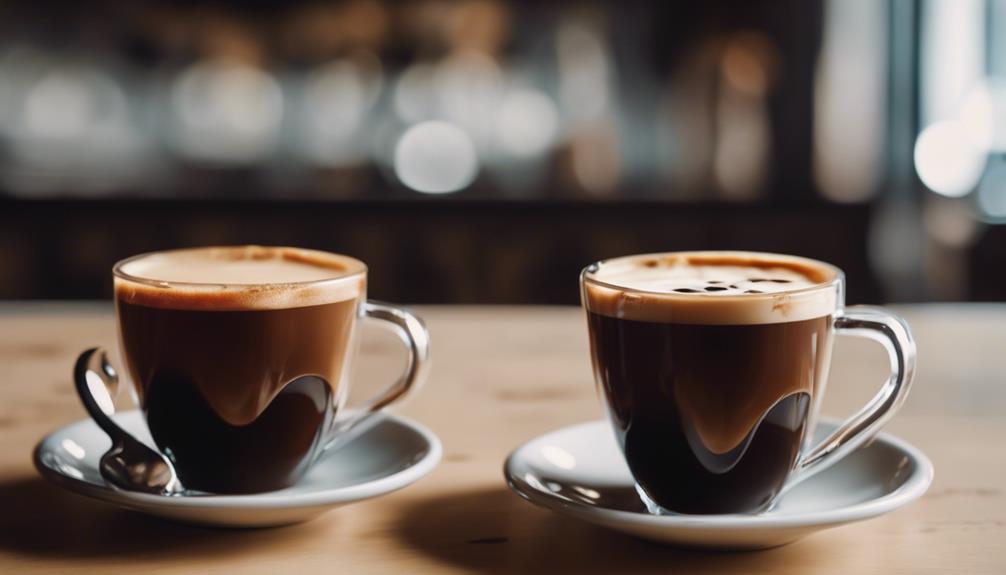
Taste buds rejoice: cold brew and espresso flaunt distinct flavor profiles and acidity levels that set them apart from one another. When it comes to flavor, you're faced with two vastly different experiences. Do you prefer the smooth, mellow taste of cold brew coffee, with its chocolatey and fruity notes? Or do you crave the bold, robust flavor of espresso, with its intense, rich notes?
| Coffee Type | Flavor Profile | Acidity | Mouthfeel | Extraction Process |
|---|---|---|---|---|
| Cold Brew | Smooth, mellow | 67% less acidic | Velvety | Minimizes bitterness, highlights flavors |
| Espresso | Bold, robust | Higher acidity | Complex, layered | Emphasizes stronger, darker notes |
Ultimately, the choice between cold brew and espresso comes down to your individual taste preferences. If you're looking for a smooth, easy-drinking coffee, cold brew might be the way to go. But if you're in the mood for a bold, intense coffee experience, espresso is the clear winner. So, which one is right for you? Cold brew is often favored for its lower acidity and gentle flavor profile, making it a great option for those with sensitive stomachs or who prefer a milder coffee. On the other hand, espresso is known for its strong and concentrated flavors, making it a popular choice for those who enjoy a robust caffeine kick. So, when it comes to the debate of cold brew vs. espresso, consider your preferred taste and caffeine intensity. And to answer the age-old question, “Is espresso stronger than coffee?”, the answer is yes – both in flavor and caffeine content.
Popularity and Market Trends
As you navigate the coffee landscape, it's clear that cold brew and espresso have carved out distinct niches regarding popularity and market trends.
Cold brew coffee has seen a surge in popularity, particularly in warmer months, with a notable increase in availability at cafes and retail markets. This reflects a growing consumer preference for smoother, low-acidity beverages.
On the other hand, espresso remains a coffee culture staple globally, with a consistent demand for espresso-based drinks like lattes and cappuccinos, catering to those seeking a quick and bold caffeine boost.
The rise of social media has played a significant role in influencing coffee trends, leading to a growing interest in unique cold brew formulations and espresso cocktails among consumers.
Specialty coffee shops often offer both cold brew and espresso on their menus, recognizing the diverse preferences among customers and enhancing their appeal to a broader audience.
Seasonal variations in demand indicate that while cold brew is favored during summer, espresso maintains strong year-round popularity, showcasing its enduring place in the coffee market.
Choosing the Right Brew
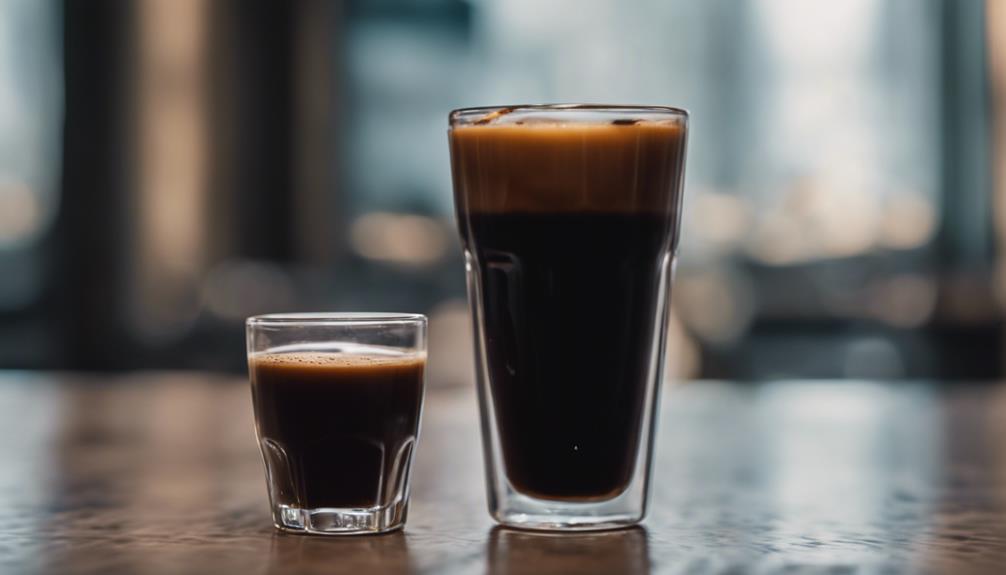
Your coffee preferences are about to get a whole lot clearer, thanks to a breakdown of the key characteristics that set cold brew and espresso apart.
When choosing the right brew, consider your brewing time needs. If you want a ready-to-drink option that can be stored for up to two weeks, cold brew coffee is the way to go. However, if you're looking for an immediate caffeine boost and a concentrated flavor experience, espresso's quick brewing time of under 30 seconds is ideal.
Think about your flavor profile preferences too. If you prefer a smoother, less acidic taste, cold brew coffee is 67% less acidic than traditional brewed coffee, making it gentler on the stomach. On the other hand, if you enjoy a bold and robust flavor, espresso offers a complex taste profile with rich crema and pronounced bitterness.
Lastly, consider your caffeine needs. An 8 oz serving of cold brew can contain 200-300 mg of caffeine, while a 1 oz shot of espresso contains about 63 mg. This impacts your overall caffeine intake based on serving size.
Frequently Asked Questions
Is Cold Brew Healthier Than Espresso?
You're wondering if cold brew is healthier than espresso? Well, yes, it is! With lower acidity and higher antioxidants, cold brew is a gentler, smoother option that's easier on your stomach and packed with benefits.
Is Cold Brew Healthy?
Are you wondering if your daily cold brew habit is doing your body good? Yes, it is! With lower acidity, higher antioxidant levels, and a smooth flavor, you're reaping the benefits of a healthier, more invigorating coffee choice that can even boost your energy.
Why Do People Prefer Cold Brew Coffee?
You prefer cold brew coffee because it's gentler on your stomach, offers a smooth flavor, and provides a boost of energy without the bitter taste, making it a convenient and customizable drink that suits your taste buds.
Does Cold Brew Wake You up More Than Espresso?
As you reach for a morning pick-me-up, you wonder: does cold brew really wake you up more than espresso? Ironically, the answer lies in your own caffeine tolerance, as cold brew's gradual release can be more sustaining, but espresso's instant kick might be just what you need.
Conclusion
You've reached the end of the brewing road, and now it's time to decide which path to take.
Think of your taste buds as a map, and cold brew and espresso as two distinct routes.
Cold brew is the scenic route, smooth and laid-back, while espresso is the high-speed highway, bold and intense.
Choose the one that navigates your senses best, and you'll be sipping your way to happiness.
